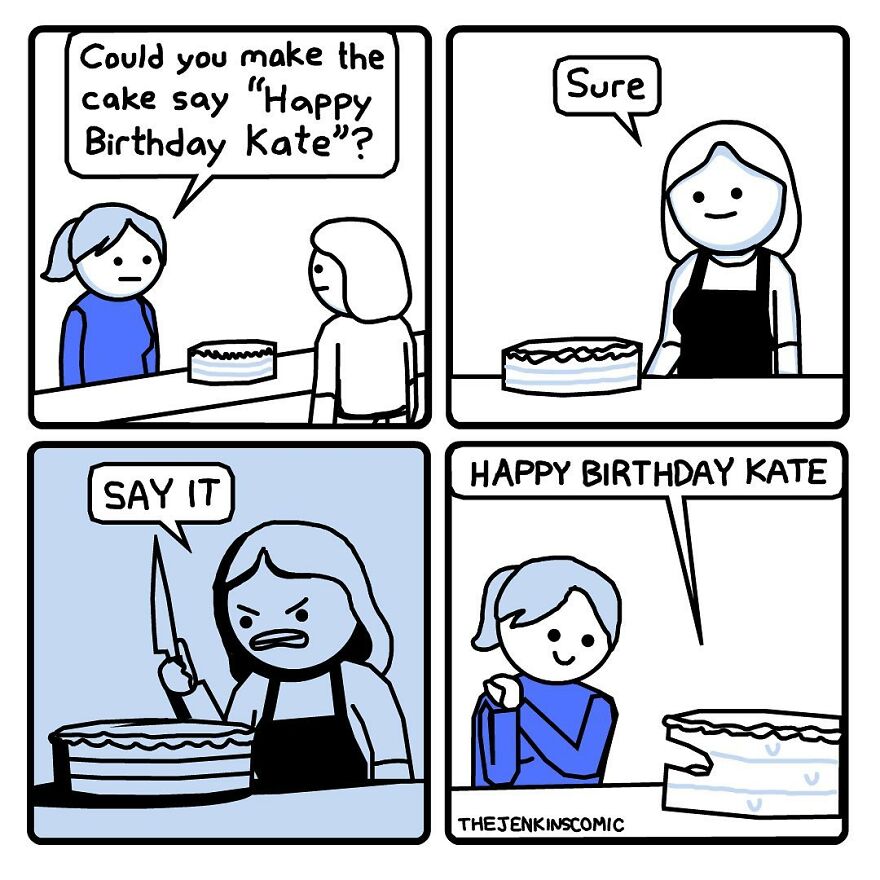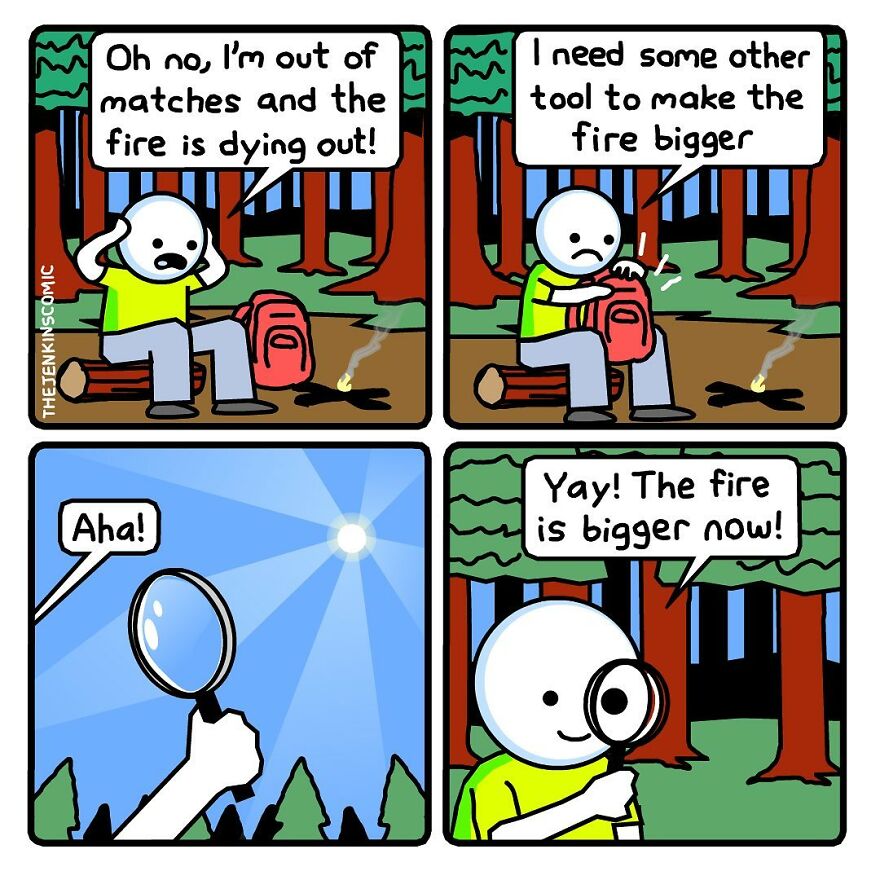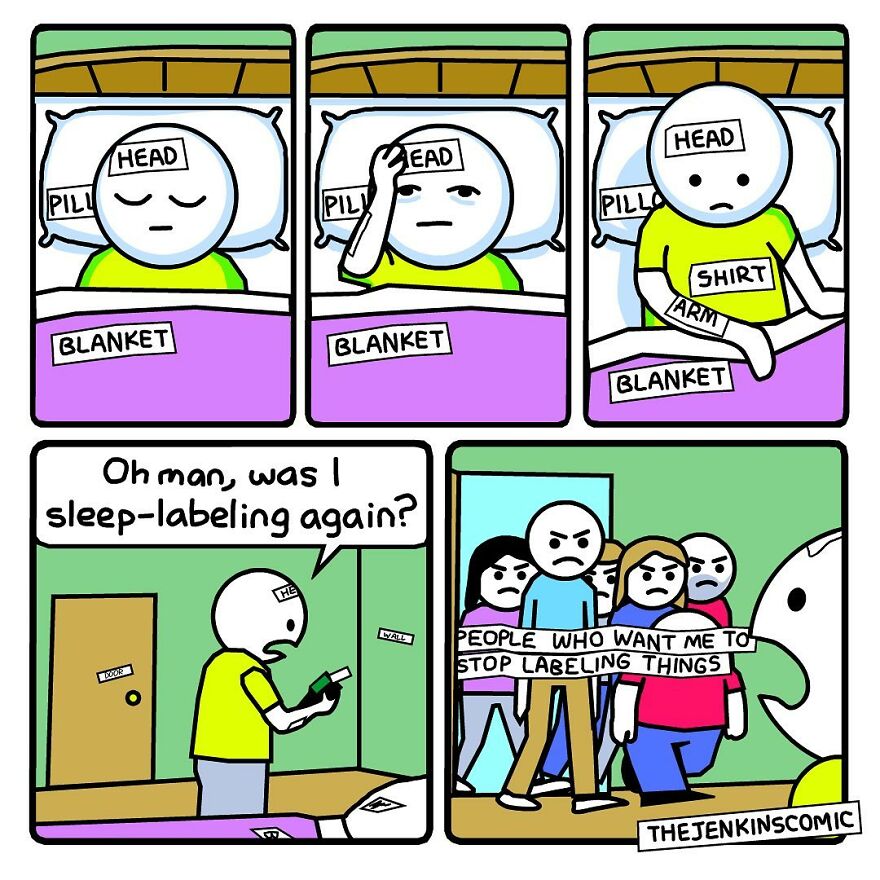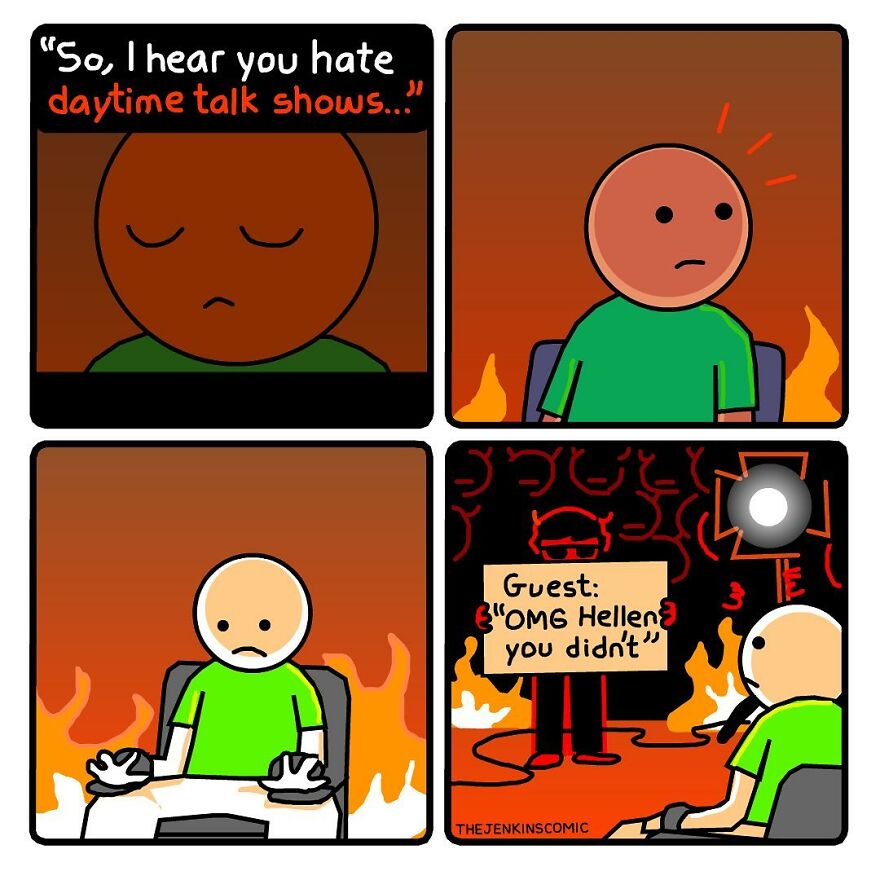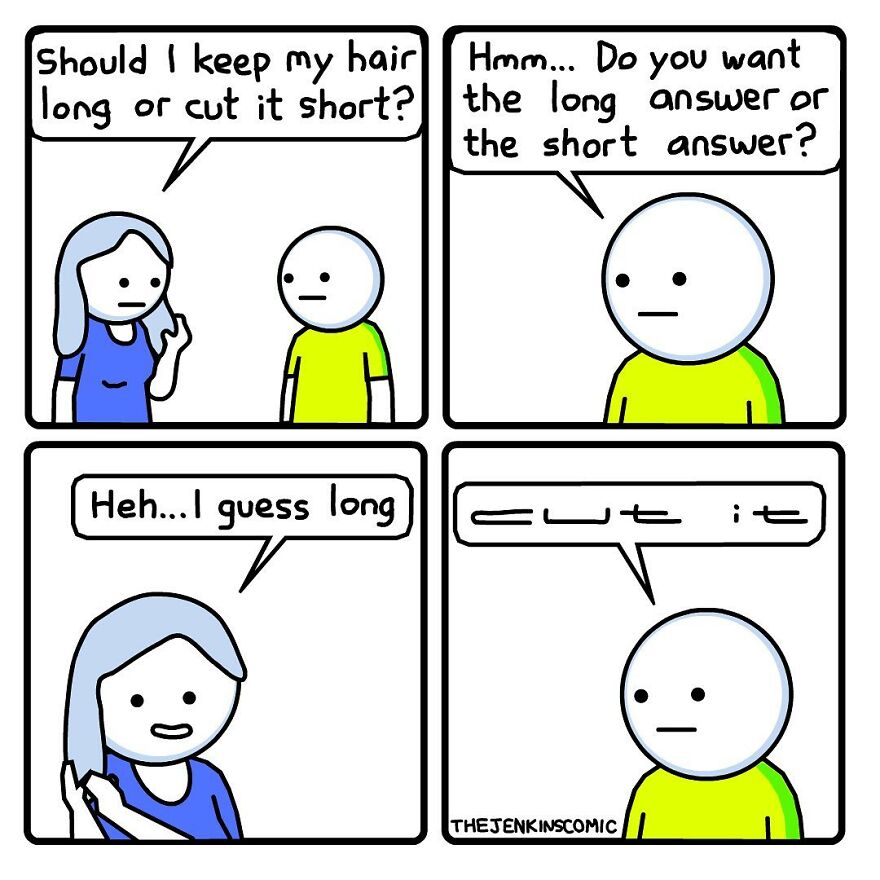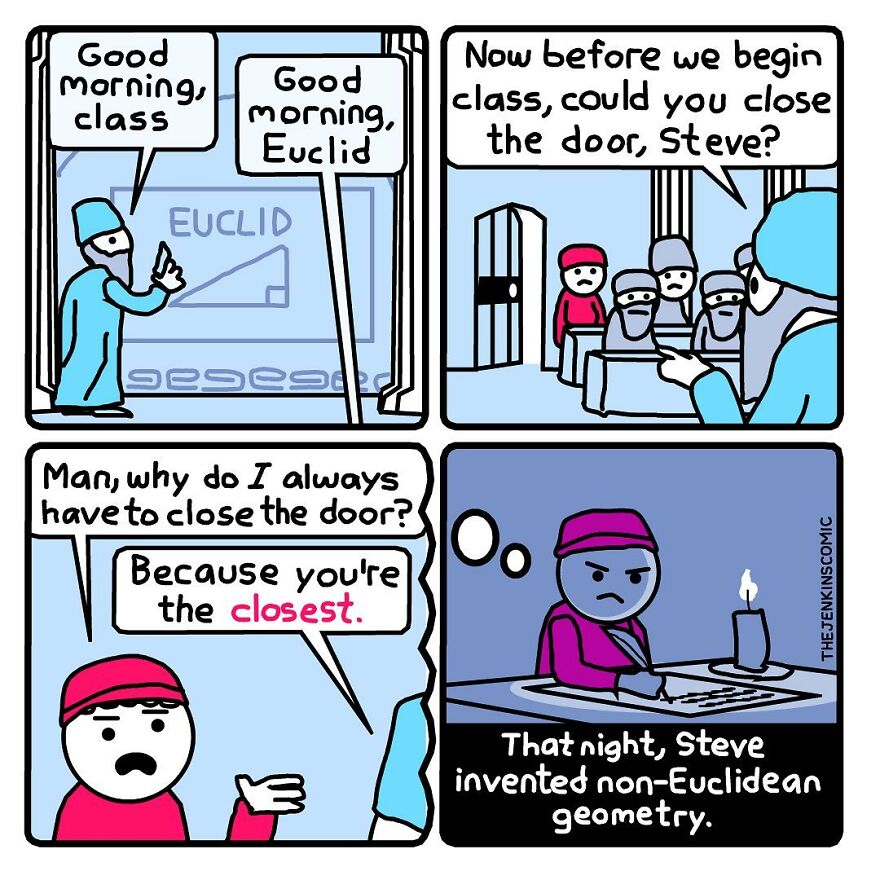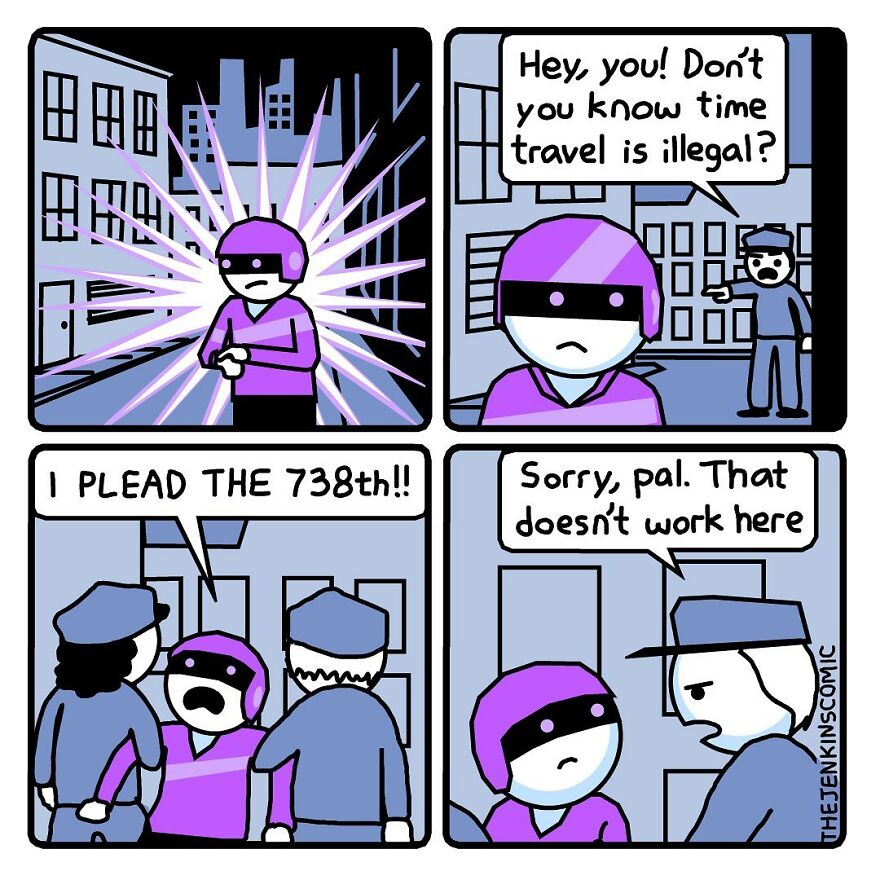"The Jenkins" is a comic about three brothers who live in their parents' basement: Barney, Butch, and Junior Jenkins.
There were nearly 600 strips depicting the brothers' lives between 2016 and 2019. Around the year 2020, the comic expanded to include a larger number of independent strips, which are now published on a more irregular schedule. The artist has also released a book which is an anthology of the first 300 Jenkins comics which was later followed by a sequel containing the rest of Jenkins' brothers freewheeling adventures.
That being said, the author currently has over 72K people on Instagram following them, as their work brings smiles to people's faces.
More info: Instagram | thejenkinscomic.wordpress.com
This post may include affiliate links.
Bored Panda reached out to the author of "The Jenkins" with some questions! First, we asked the artist if they had any life-changing influences that might have helped them with their art and art style in general when it comes to their comics.
"I think the major distinguishing aspect of The Jenkins is its humor, which is drawn from a lot of influences. There is, of course, the inimitable Far Side and Calvin and Hobbes comics, but also the contemporaries xkcd and Mr. Lovenstein. The humor is also influenced by the shows I’ve seen, like The Office and The Simpsons."
Art, in any kind of form, takes a lot of time not only to practice but also to produce, therefore we asked the artist how long it takes them to fully finish their comics.
"The ideas take days to marinate. When I first started doing dailies, I’d put an idea into pictures in five minutes. Now drawing out a comic takes maybe 2-4 hours, and it feels like it’s taking longer all the time."
Being an artist is not easy, one can easily encounter a lack of inspiration, burnout, etc, so we wanted to ask the artist about their ideas for the comics.
"In humor, it’s better to think of ideas as premises, and premises as just ordinary ideas put together. For example, I wrote a joke called 'Time Travel Pizza' that I think anyone could come up with if they stared at the words 'time travel' and 'pizza' long enough. That’s one of the more overt collisions of ordinary ideas, but another fun thing to do is to work backwards from a 'rule': for example, in 'Three Sheep in a Trenchcoat,' I worked back from the 'rule' that counting sheep makes people fall asleep. There isn’t much that unites my strips, but this concept of absurd premises from ordinary ideas is pretty common.
Although I do have to confess there are some comics of mine that I will never understand how I came up with, like 'Pictionary.'"
As we mentioned before, sometimes creative work can cause quite a burnout, therefore we asked the artist how they dealt with that as well.
"Yes, burnout is real. I spend 2 to 10 hours a week on this comic, but I couldn’t spend more; I couldn’t do more. Any extra time would go into staring at a blank screen."
We also asked the artist about how people reacted to their work.
"What I find interesting about humor webcomics is that compared to other mediums like drawings, poetry, or film, they’re so accessible. You can show your art to people without feeling like you’re some nut showing off your art. They’re really impersonal. People love The Jenkins—it’s inoffensive, dumb, and fun. I’d wager the most common reaction besides a chuckle is 'I don’t get it.'"
The creative process is not easy, but there are some enjoyable parts to it as shared by the artist.
"The genesis is the most exciting part. The part that makes you want to stop whatever you’re doing and look for a pen and paper."
"The Jenkins" also told us a little bit about why they chose Instagram as one of the platforms for posting their comics.
"For nearly four years, The Jenkins’ only real internet presence was a Wordpress blog. In the early months of COVID, I found myself with more free time to make comics. I figured I might as well branch out to other social media to get the comic seen, and it gained traction."
Digital art and art, in general, is not easy and requires a lot of patience, time, resources, and in most cases even money, therefore we wanted to know how the talented comic artist started their own career in digital art.
"In middle and high school, I used to make games and animation with Scratch, an introductory programming tool and online community made by the MIT Media Lab. I go by the username @Hobson-TV and I’m pretty well known among the Scratch community.
Fun fact: The Jenkins comic is actually still drawn in the Scratch editor. It’s not the most professional software, but it’s what I’m used to."
Artists tend to get motivated by a lot of things such as curiosity, the search for beauty, or even meaning, in response to that, the artist told us, "I just want to make the funniest comics I can, and simultaneously keep the strip fresh. Since this comic isn’t my livelihood (in the financial sense) and I don’t need to appease the algorithm with 'relatable' comics, I figure I might as well have fun and experiment and try out new stuff with my readers."
Hi, can you give me a lift? I've got a flat. Yeah, and all the paint is chipped.
That's your gift now go off and be the greatest wedding Minister there is
Oh if only there was a course like this that people had to take. I think some people don't know how to use logic so much anymore.
Well I had a calculator watch when I was a kid, but you'd need big pockets for the rest!
Well unfortunately for me I'm a girl and people are stupid and don't make pockets for girls
Load More Replies...I actually carry around a calculator with me everywhere! It's a TI 84 plus CE python for those interested. 10/10 would recommend!
I'm like a broken record, I'm like a broken record and I'm not playing right. Drocer nekorb a ekil mi! HIGHER POWER (Coldplay) /s
I bet everybody who doesn't like what they see in the mirror wishes they could do that.
And they'll still think it when you join, only now you'd hear it right along with all the rest.
There will definitely be some "interpretive dance" when somebody hits his/her thumb!
They need to stop with the lie detector tests. They're so unreliable they're not even admissible in court but the cops still think it can prove guilt or innocence.
totally read that first panel hearing these guys in my head..... LAB-62b1c7...a87972.jpg 

 Dark Mode
Dark Mode 

 No fees, cancel anytime
No fees, cancel anytime 













